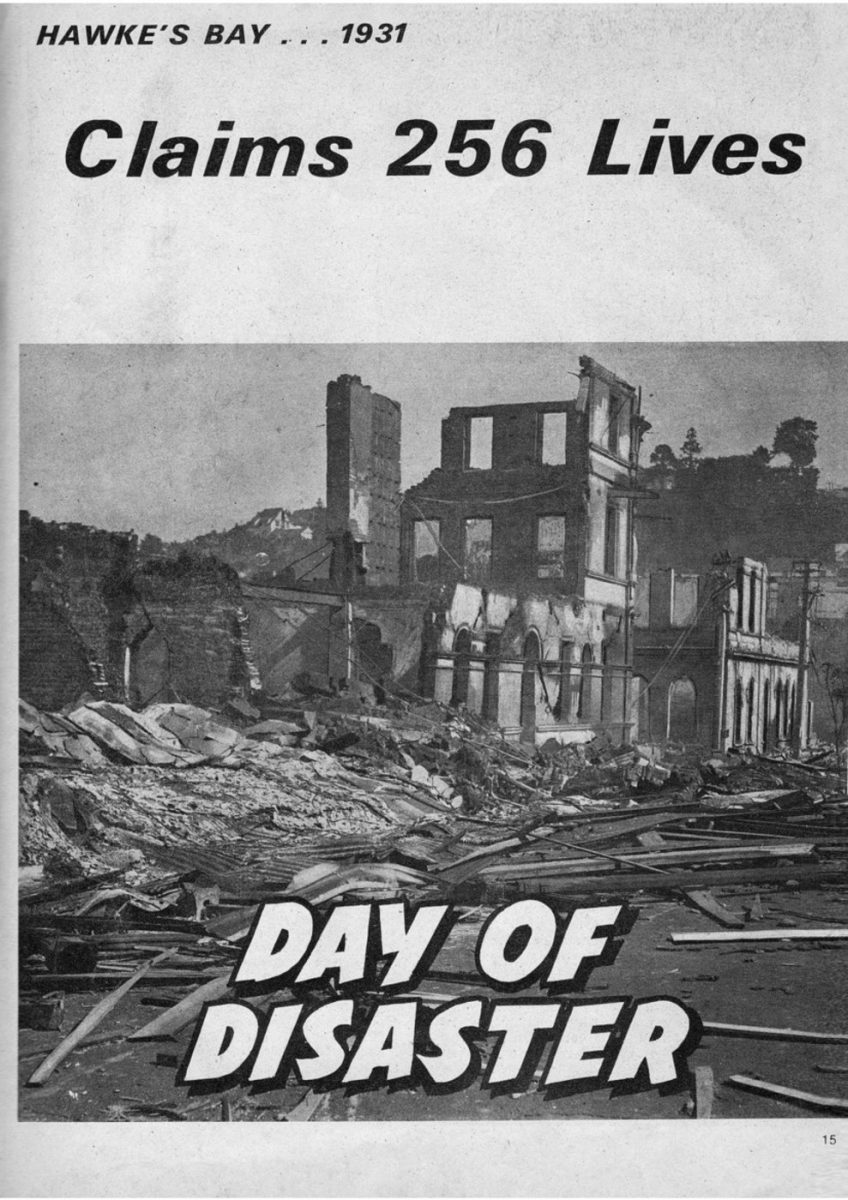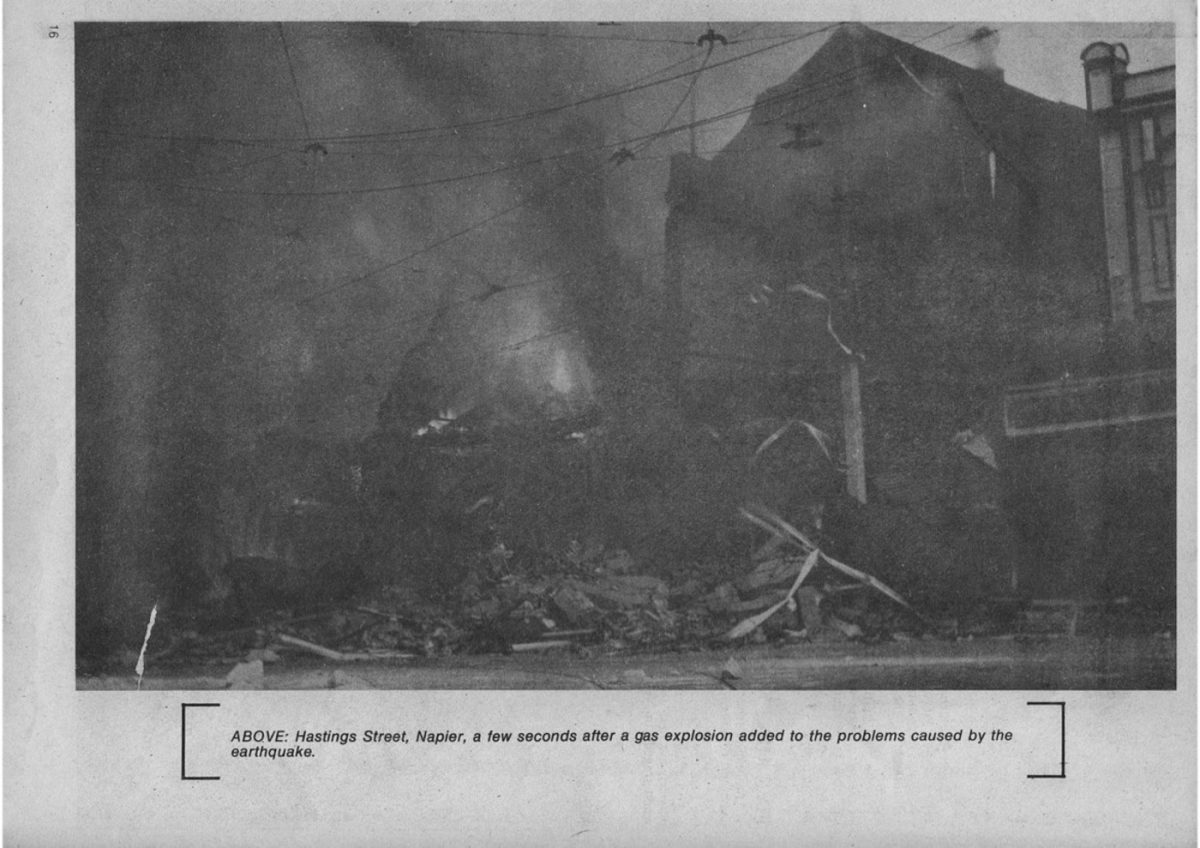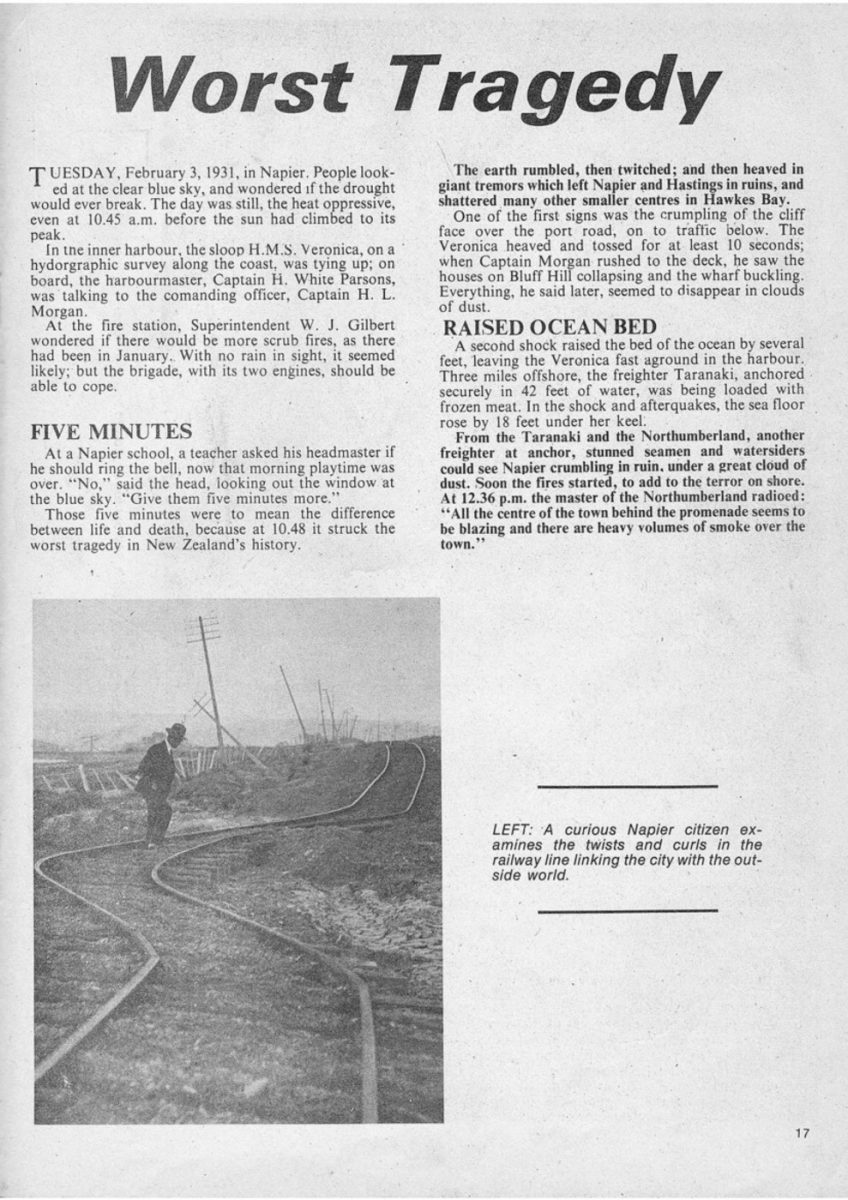Page 19
“Several temporary hospitals have been organised and the Veronica is forming an x-ray station. All destitute women and children are being received on board the Veronica. Earthquake shocks are still continuing.”
The shakes, in fact, were to continue for some 10 days, adding to the problems of rescue, clearing up the ruin and providing for the comfort and evacuation of about 30,000 people.
The courthouse was used as a morgue; 161 died in Napier, 93 in Hastings, and two in Wairoa – a total of 256 in all.
BABIES ESCAPE
But many lived – some almost by miracles. Fourteen of the 94 inmates of the Parke Island old men’s home died; 90-year-old James Collins was dug out of the ruins three days later, still alive. His body had been protected by a fallen beam, his face buried in a mattress. At the Salvation Army maternity home, a chimney fell across five babies in their bassinets; not one was injured.
Help was soon to come to Napier and Hastings, once the word got out. The following day the cruisers Dunedin and Diomede left Auckland, to help the Veronica in her rescue work; doctors, nurses, soldiers, railway men were rushed in from many parts of the country. That same day, February 4, a general order was issued ordering the evacuation of Napier within two days.
Fortunately, the good weather continued for several days after the disaster; rain would have made the situation for the rescuers, and for the many people forced to live outdoors, intolerable.
Not all the consequences of the earthquake were bad. The entire Ahuriri Lagoon, for instance, a wide stretch of water and marsh, was lifted by six feet or more, leaving behind a stinking mess of dead fish and shellfish, foul mud and rotting vegetation. Yet by 1936 it had been converted, by careful drainage and land development, into a productive farm, carrying crops and sheep.
But the damage was immense, although no precise costing was ever made. Estimates at the time said that, beside the tragic loss of life, the earthquake cost Napier £5 million and Hastings nearly £2 million. Yet the huge task of recovery and reconstruction went ahead so fast, with nationwide assistance, that within two years a new town had risen at Napier, and the population had actually increased since the earthquake.
Seismologists say that the Napier earthquake, with a magnitude of around 7%, was the biggest in New Zealand since the giant Wellington earthquake of 1855.
So strong was it, that it was felt nearly 500 miles away.
Could it have been anticipated? There was no doubt that many of the buildings of Hawkes Bay were completely inadequate to resist a big earthquake, let alone one of the magnitude that struck Napier. The earthquake led to a fresh assessment of earthquake hazards and building codes, so that things are hopefully better today.
Yet Napier had been warned; on February 23, 1863, the infant town was shaken by tremors which brought nearly every chimney down, and in some cases removed houses from their piles. But the damage was relatively small, because of the smaller population and the few brick or stone buildings. When the earth speaks, people should heed the warnings.
ABOVE: This recent aerial view shows the expansion that has taken place in Napier since the disastrous earthquake. Residents claim the big Bluff Hill is still the safest place in the city despite its rather unstable appearance. Homes on the hill suffered little in comparison to the rest of the City centre in 1931.






















Do you know something about this record?
Please note we cannot verify the accuracy of any information posted by the community.